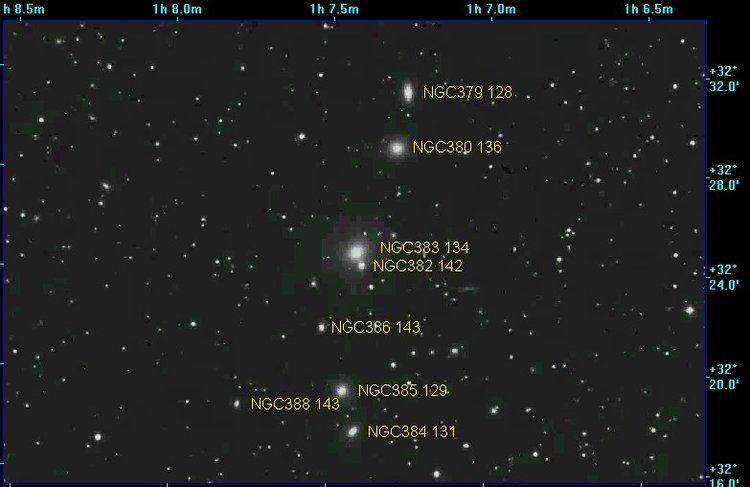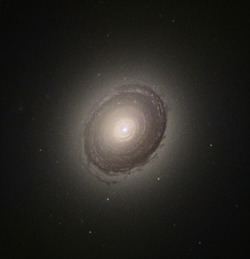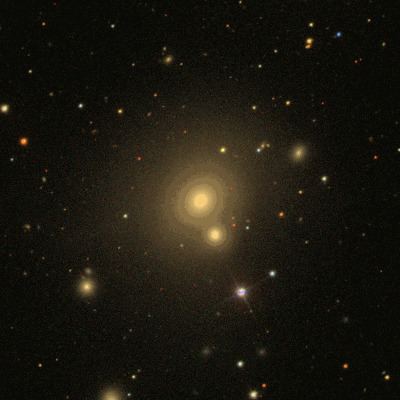Right ascension 01 07 24.959 Redshift 0.017005 Apparent magnitude (V) 13.4 Magnitude 13.38 | Declination +32° 24′ 45.21″ Distance 209,000,000 ly64 Mpc Type S0 | |
 | ||
Similar NGC 379, NGC 507, NGC 95, NGC 250, NGC 128 | ||
NGC 383 is a double radio galaxy with a quasar-like appearance located in the constellation Pisces. It is listed in Halton C. Arp's 1966 "The Arp Atlas of Peculiar Galaxies." Recent discoveries by the National Radio Astronomy Observatory in 2006 reveal that NGC 383 is being bisected by high energy relativistic electrons traveling at relatively high fractions of the speed of light. These relativistic electrons are detected as synchrotron radiation in the x-ray and radio wavelengths. The focus of this intense energy is the galactic center of NGC 383. The relativistic electron jets detected as synchrotron radiation extend for several thousand parsecs and then appear to dissipate at the ends in the form of streamers or filaments.

There are four other nearby galaxies NGC 379, NGC 380, NGC 385, and NGC 384 which are suspected of being closely associated with NGC 383, as well as several other galaxies at relatively close distance.

A Type 1a supernova, SN 2015ar, was discovered in NGC 383 in November 2015.



